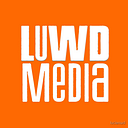‘Star Wars: The Force Awakens’: Hollywood’s Greatest Franchise Strikes Back!
George Lucas must have deeply bruised shins, such is the extent to which he surely kicked himself when he first watched J.J. Abrams’ Star Wars: The Force Awakens, a film that does right everything Lucas did so wrong in his own 1999–2005 Star Wars prequel trilogy, the trio of films that has spawned a million jokes and internet memes with its mix of incoherent plot, laughable acting and childish dialogue. As I learned this week, The Force Awakens is a film that strongly benefits from repeat viewings. I first saw it at a midnight screening with a few hundred salivating superfans who squealed and clapped at every twitch of Han Solo’s eye or revving of the Millennium Falcon’s engine. My viewing experience was so dominated by witnessing my childhood cultural passions being revisited on the cinema screen once more, and gasping/weeping at the shocking plot developments Abrams has thrown before beloved Star Wars characters, I felt I had no choice but to reexamine more objectively this blockbuster feast before formally publishing a review.
What is most apparent when watching The Force Awakens for the second, and likely third and fourth times, is Abrams’ sheer mastery in introducing and expanding a massive, endless universe and dozens of its inhabitants in an incredibly tight time period. He’s done it before with his 2009 Star Trek reboot- one of the most indisputably entertaining science-fiction films of all time, as well as Mission: Impossible III and a ton of TV work. Abrams understands the storytelling art, and the Star Wars franchise desperately needs a master storyteller to guide it away from the visual vomit of The Phantom Menace and its diabolical sequels, and give it a gentle push in the direction of Lucas’ original 1977 masterpiece- a relatively simple but immensely imaginative fairytale with a distinct freedom of physicality. The actors in Star Wars ’77 are actually standing opposite one another; something which cannot be felt between Liam Neeson and Ahmed Best in Phantom’s violently unfunny Qui-Gon/Jar-Jar exchanges. The Force Awakens appears from Frame 1 like a film crafted by people who love Star Wars, respect Star Wars and the aspects of the Original Trilogy that won so many fans of all ages. A downside of this is that, in its total reverence for the source material, The Force Awakens often has the aura of high-quality fan-fiction, rather than a legitimate sequel that will be accepted as Star Wars canon.
This applies particularly to Harrison Ford’s performance as Han Solo, which can be more accurately described as Harrison Ford playing himself in a Han Solo costume: few of Solo’s more accidental and subtle physical ticks are present here. Ford seems to be having fun for most of his scenes, especially when bantering with old friend Chewbacca, but this resurrection of a universally beloved creation is no more memorable than Indiana Jones’ comeback in Kingdom of the Crystal Skull was in 2008. That said, Ford is lucky to have filmmakers directing him who understand to some extent why and how the Solo character worked so well to begin with: something which was sadly not the case with Arnold Schwarzenegger in this year’s abysmal Terminator: Genisys, where one of cinema’s most legendary figures was reduced to a gurning comedy sidekick merely to sell the film on the actor’s back. Ford earns his top billing on The Force Awakens: his role is large, significant and the source of approximately 50% of the Original Trilogy nostalgia the film evokes (the remaining half belonging to some sand dunes, two bright suns and the John Williams score). Chewbacca (Peter Mayhew) is possible the film’s single most delightful character, bringing more effortless humour to a single roar than Lucas’ “token comedy character” Jar-Jar Binks did in an entire film. The most ingenious joke of The Force Awakens, however, belongs to one C-3PO. But we won’t spoil it for you.
Of the film’s plot, there is little to be said that wouldn’t be considered a “major spoiler” by somebody somewhere. Surprisingly confident, capable and exceptionally charming young leads Daisy Ridley and John Boyega are Rey and Finn, respectively a lonely scavenger on the desert planet Jakku and a conscience-stricken stormtrooper. They come face-to-face with peculiar figures from The Resistance (adorable droid BB-8 and Oscar Isaac’s charismatic, roguish pilot Poe Dameron) and later one another, and kick-start the adventure that is likely to carry beyond Abrams’ film and into the Rian Johnson and Colin Trevorrow-directed Episodes VIII and IX. The McGuffin, a map that leads to… let’s just say An Important Person, is dealt with in an uncharacteristically infantile manner, pulling the film’s tone down a few notches of intellect every time it is discussed. Other than this, the developments in The Force Awakens are generally intelligently-crafted and unexpected. The most visible antagonist on display is Adam Driver’s Kylo Ren. “Where was Adam Driver when I was casting Attack of the Clones?”, we hear George Lucas cry! His almost painfully exaggerated facial and verbal intensity may not fit particularly in the tonally light The Force Awakens, but OH BOY would Driver have made a good Anakin Skywalker. Lucas hasn’t had any issues digitally remastering his work before: perhaps editing a CGI Driver clone into the prequels in Hayden Christensen’s place would make them more watchable. Kylo Ren is a fascinating character: unstable, unpredictable and a symbol of a particular culture. He is, in the Star Wars universe, the frustrated teenager with a gun: except in the place of an assault rifle he carries a flaming red lightsaber, and at his disposal is an army of stormtroopers. Domhnall Gleeson appears as a First Order ally of Ren’s (essentially doing a hyper-intense Peter Cushing impersonation), as does Gwendoline Christie’s Captain Phasma: a character featured heavily in marketing and merchandise who comes close to being the most underserved by the film (if not for the complete onscreen lack of one particular star for almost the entirety of the story). None of these moustache-twirling lackeys are as absurdly cartoonish as Emperor Palpatine or Count Dooku, but their unclear motives make them characters of vastly inferior dramatic weight to Ren, who has enormous potential as a cultural icon of a Vader-ish variety.
With his broadly talented cast and solid story in place, Abrams does seem to struggle with some of the script (co-written with Star Wars veteran Lawrence Kasdan from a Michael Arndt draft). Kylo Ren’s speech, in particular, is consistently quite pantomimic, while only Solo, Dameron and arguably Chewbacca ever say anything vaguely capable of becoming Instantly Quotable Dialogue. Abrams’ trademark lens flare is present, but in nowhere near the usual quantities, with him clearly favouring Sparks In The Frame and more earthy, murky visual language to differentiate his Wars from his slick Trek films (the colour scheme of which more closely resembles Stormtrooper outfits than any of The Force Awakens’ heroes). His “auteur’s stamp” may not be largely visible on this film, but he has done what no other director has been able to do since the year 1977: he has begun a new Star Wars trilogy with a bang and left fans actually- believe it or not- wanting more. In a more spoiler-heavy conversation on the film, there are many flawed storytelling decisions to be acknowledged, but in order for the concept of storytelling to be referenced at all indicates something special: a Star Wars film of a superior nature. The force, if you will pardon the cripplingly obvious cliché, is strong with this one.

